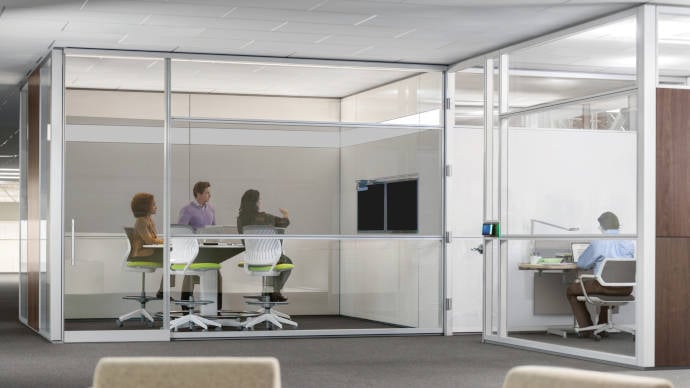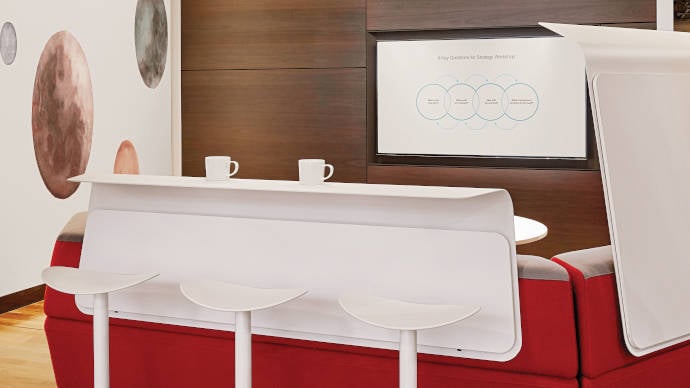Disruption from coronavirus is already impacting the global economy. But while the media is fixating on worst-case scenarios, we ask how companies can keep a practical focus on maintaining communication, collaboration and productivity even as distance and absence threaten familiar working patterns.
COVID-19 creates a remote working challenge
“We’re trying to figure out how to keep the business going when people can't get to the office," said Peter Cappelli, a professor of management at the Wharton School of the University of Pennsylvania in an interview with ABC News, "My sense is the first thing that will happen, and the most likely thing is that it's not that all your employees will be too sick to work, it's that they won't be in the office.”
With this in mind, here are some practical tips around remote working to help your office set up and cope with prolonged periods of individuals working in isolation and teams prevented from physically coming together.

Setting up workspaces to support dispersed and disrupted teams:
Inevitably, in the weeks to come there will be increased pressure on video conferencing facilities, as more workers work from home and virtual meetings replace planned face to face gatherings.
Here are a couple of things for managers to consider as you plan your resources and approach to this shift:
- There will be even more unpredictable configurations of people in and out of the office who need to communicate and collaborate in a range of pre-planned and ad hoc ways
- Meanwhile, those working from home for the first time will be faced with new challenges and may need extra help adjusting, both socially and professionally

Increase the options for ‘one to one’ and ‘one to many’ video conferencing within the workplace
Plan to support a range of videoconferencing exchanges among different team sizes and configurations. You will need to be able to cater for different types of call including a mix of virtual and physical presences, for:
- Private one-on-one interactions
- Large and small team sessions
- Public, 'town hall' type gatherings
To make this practical and meet extra demand for video conferencing, distribute as many choices as possible around your workspace - set up individual videoconferencing kiosks adjacent to team spaces and create a range of spaces with different degrees of privacy available.
6 ways to improve the quality and variety of digital interactions for dispersed teams
- Ensure existing tech is up to the challenge - Video conferencing apps should be easy to switch on and off, and rooms need to be prepared to host calls quickly and efficiently. Research shows that may businesses report technical problems at the beginning of video conference calls amounting to several hours worth of delays each day. When there is extra pressure on these facilities, the priority has to be on finding seamless video tech and collaboration tools that 'just work'.
- Position cameras properly: Consider camera and microphone placements carefully within meeting rooms. Create a layout that allows all users to be on camera and be clearly audible. Include multiple screens so participants can see each other and their content at all times. Make sure people can move and stay on-camera without disrupting the flow of interaction.
- Cameras on by default! Conference calling often encourages participants to multi-task, or worse “zone out” — because you’re hidden from view. Video should be the default setting for any remote collaboration. Seeing facial reactions and body language lets you “read the room,” more effectively meaning people are less likely to interrupt or speak over one another.
- Create continuous connections: For remote workers, feeling part of a wider community is a powerful way to keep focused and motivated Consider setting up a “wormhole”—a continuously open, real-time video connection that acts like an open window into your office so that remote workers and those in other locations can continue to feel an integral part of office life.
- Create consistent connections - It’s easy to have a siloed work experience when everyone is working on their own. We recommend instituting quick daily virtual team video meetings to keep work moving forward.
- Make work visible - Take a lesson from agile teams and start a ‘virtual project board’. List tasks, progress and deadlines to keep everyone on the same page. With you get the added benefit of people knowing where to jump in and help when needed.

Isolation shouldn’t mean frustration
Meanwhile, for those working from home, you need to make it easy for yourself to join conversations and collaborate virtually - but keep yourself sane through glitch-free digital communications and a healthy work/life balance,
Prevent data disruptions
There’s nothing worse than a dodgy connection. Missing vital information or speaking for 3 minutes before realising you’ve been cut off. If possible, use a cable/Ethernet connection, because Wi-Fi can be unreliable. If you’re on a video call, close any open applications to preserve computing bandwidth for the video
Be seen and heard
Choose a room with good acoustics (e.g. not a kitchen with lots of echo). Headphones with a built in mic will provide a better experience than computer audio on its own. And, if you switch from one video platform to another, close one before opening another because the software may grab hold of your microphone. Finally, if you’re late to an online meeting or not speaking, mute your audio to avoid disrupting the conversation.
Learn how and when to switch off
Employers and workers need to establish clear boundaries for those working from home. It’s tempting for remote workers to over-compensate and be 'always available’ while employers can be guilty of forgetting about those working from home. Either scenario is bad for morale and bad for sustainable and productive working practice.
Conclusion
As the global community mobilises to prevent the further spread of coronavirus we can all play our part by supporting more virtual collaboration. Giving us the right tools to help those coping with enforced isolation do their jobs, and dispersed teams continue to deliver will make everyone more productive and happier during potentially challenging times.









